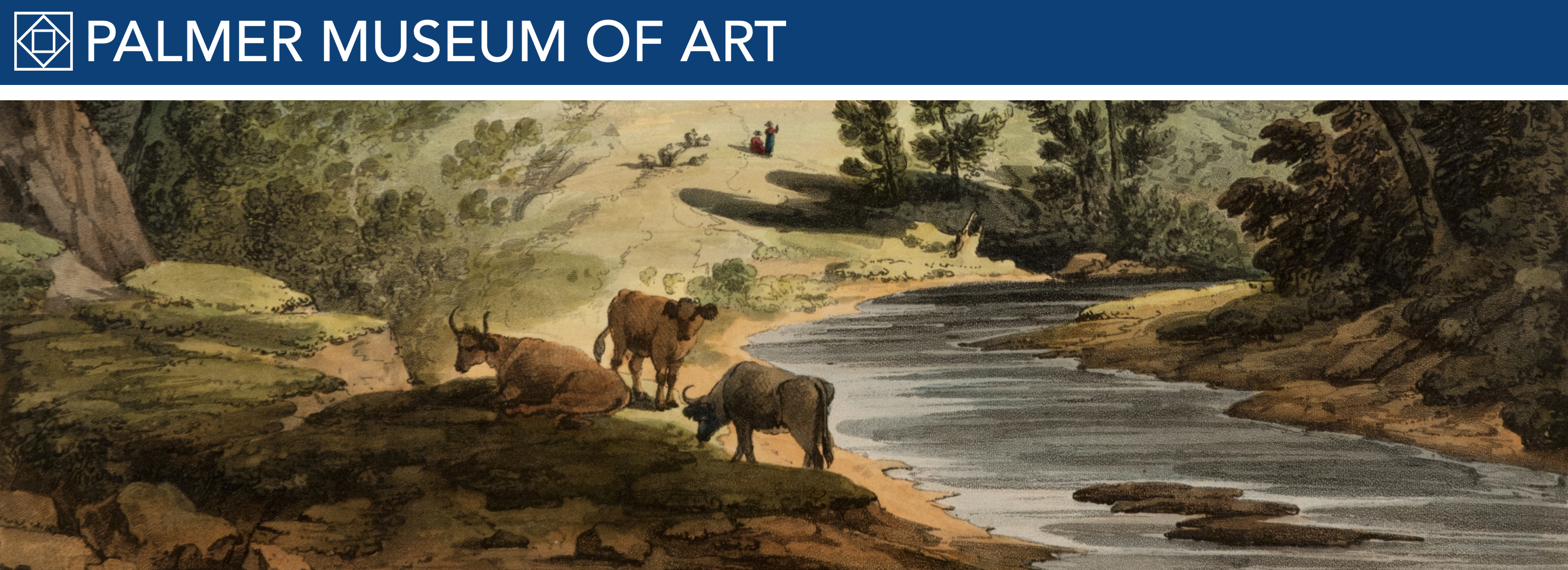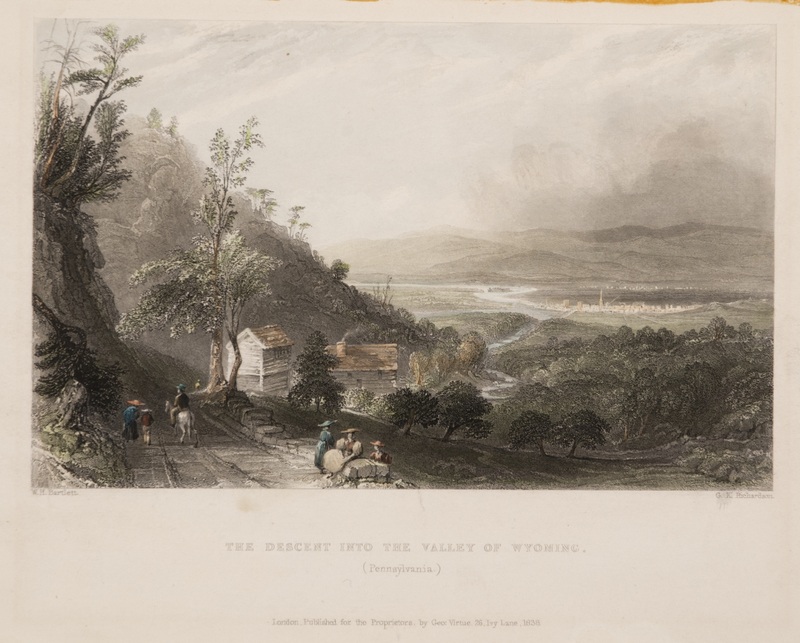Pennsylvania Scenery
George K. Richardson
English, active c. 1836–1891
After William Henry Bartlett
English, 1809–1854
The Descent into the Valley of Wyoming
Engraving and etching on steel, with hand coloring, 4 1/2 x 7 1/8 inches
From Part 7 of American Scenery; or, Land, Lake, and River: Illustrations of Transatlantic Nature
Published December 1, 1837, by George Virtue, London
Partial gift and purchase from John C. O’Connor and Ralph M. Yeager
86.639
American Scenery was conceived in 1835 by British artist William Henry Bartlett and Nathaniel P. Willis, an American writer then working in London as a foreign correspondent for the New York Mirror. The following year, the two sailed to the United States, where together they traveled from New Hampshire to Virginia to provide texts and sketches for the project. The materials were periodically sent back to publisher George Virtue, who had assembled more than thirty of England’s finest engravers to translate Bartlett’s drawings into print so that the portfolio, issued in thirty monthly installments beginning June 1837, could be sent to subscribers in a timely manner.
Bartlett drew this scene along the only engineered road into the Wyoming Valley at the time, the Easton–Wilkes-Barre Turnpike, as it here descends toward the village of Wilkes-Barre, located on the east bank of the Susquehanna River. The town farther in the distance is Kingston. The accompanying text by Willis, typical of his writing for American Scenery, barely mentions the engraving and recounts instead the 1777 murder of Shawnee Chief Cornstalk at Point Pleasant, located some 450 miles southwest of Wilkes-Barre, in current-day West Virginia.

